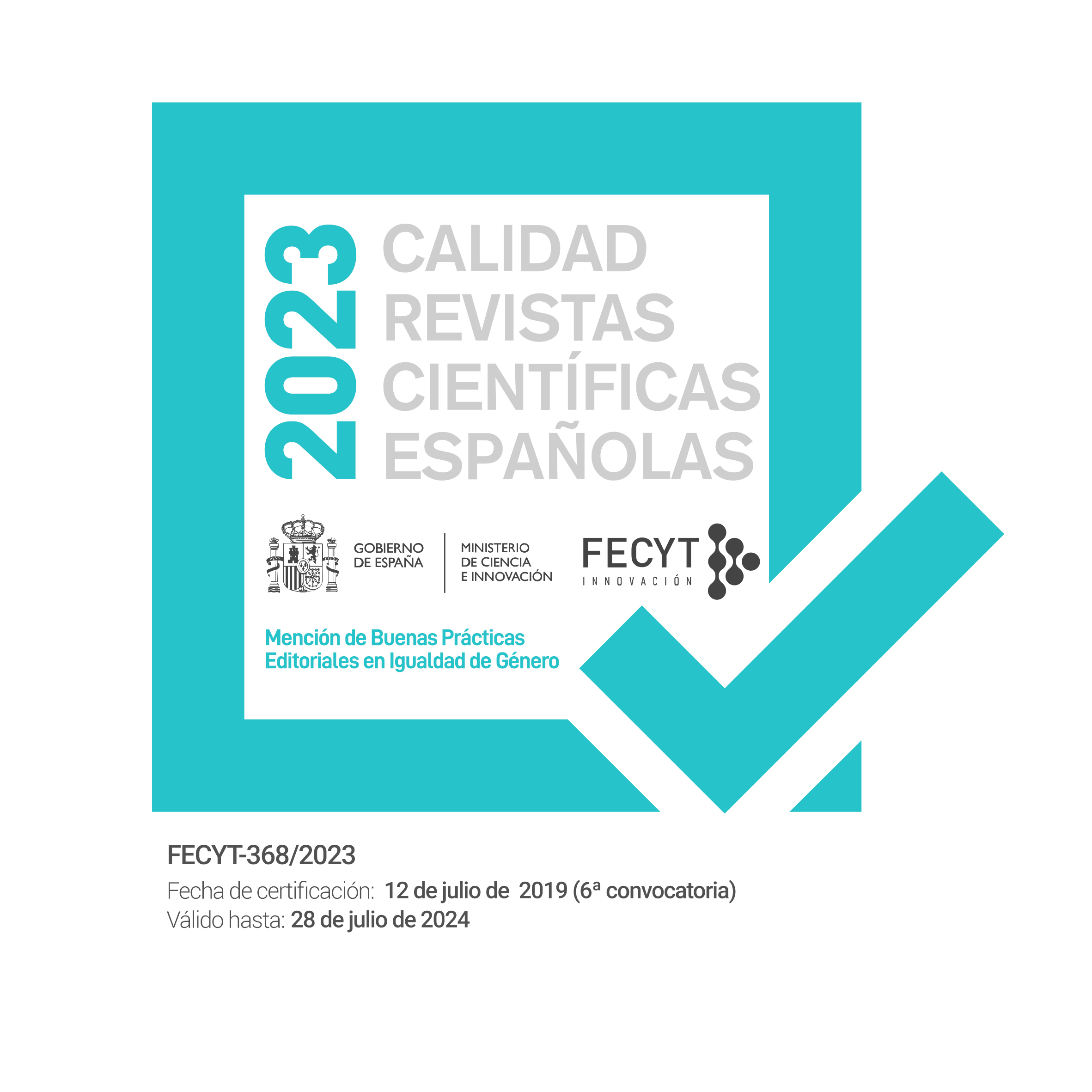Man as Rescuer and Monster in Steven Spielberg's Film Text "Schindler's List"
DOI:
https://doi.org/10.18172/jes.121Abstract
This journal article addresses the confrontation between two extreme representations of man in Steven Spielberg’s Schindler’s List (1993): the rescuer and the monster. It is my contention that these representations simplify two of the moral options – good versus evil – from which men can freely choose according to both Judaism and Catholicism, which are the two religious cults the film alludes to. This article has a three-fold structure. The first part focuses on the godlike representation of Oskar Schindler and his relation to key episodes in the Bible. The second one deals with Amon Goeth, Schindler’s mirror image and the incarnation of evil in the film. The third part surveys Spielberg’s blending of religious traditions in some films prior to Schindler’s List. As a conclusion it is proposed that the godlike man who rescues his people is not only Oskar Schindler, but also Steven Spielberg.Downloads
References
Baxter, John. 1996. Steven Spielberg: The Unauthorised Biography. London: HarperCollinsPublishers.
Bernstein, Michael André. 1994. “The Schindler’s List Effect.” The American Scholar 63 (3): 429-32.
Bettelheim, Bruno. 1991 (1975). The Uses of Enchantment. The Meaning and Importance of Fairy Tales. New York: Alfred A. Knopf.
Brecher, Elinor J. 1994. Schindler’s Legacy: True Stories of the List Survivors. London: Hodder and Stoughton.
Cheyette, Brian. 1997. “The Uncertain Certainty of Schindler’s List.” Spielberg’s Holocaust: Critical Perspectives on Schindler’s List. Ed. Y. Loshitzky. Bloomington and Indianapolis: Indiana University Press. 226-38.
Crowe, David M. 2007. Oskar Schindler: The Untold Account of His Life, Wartime Activities, and the True Story Behind the List. Cambridge, MA: Perseus Books Group.
Díaz Cuesta, José. 1997. “From Fact to Fiction, From Fiction into Film (A Case of Consecutive Translation).” Trasvases culturales: Literatura, Cine, Traducción 2. Eds. J. M. Santamaría, E. Pajares, V. Olsen, R. Merino, and F. Eguíluz. Vitoria-Gasteiz: Universidad del País Vasco. 131-38.
Doneson, Judith E. 1997. “The Image Lingers: The Feminization of the Jew in Schindler’s List.” Spielberg’s Holocaust: Critical Perspectives on Schindler’s List. Ed. Y. Loshitzky. Bloomington and Indianapolis: Indiana University Press. 140-52.
Fensch, Thomas, ed. 1995. Oskar Schindler and his List: The Man, the Book, the Film, the Holocaust and Its Survivors. Forest Dale (Vermont): Paul S. Eriksson.
Fogelman, Eva. 1995 (1994). Conscience and Courage: Rescuers of Jews during the Holocaust. New York: Anchor Books.
Friedman, Lester D. 2006. Citizen Spielberg. Urbana and Chicago: University of Illinois Press.
Gourevitch, Philip. 1994. “A Dissent on ‘Schindler’s List’.” Commentary 97 (2): 49-52.
Horowitz, Sara R. 1997. “But Is It Good for the Jews? Spielberg’s Schindler and the Aesthetics of Atrocity.” Spielberg’s Holocaust: Critical Perspectives on Schindler’s List. Ed. Y. Loshitzky. Bloomington and Indianapolis: Indiana University Press. 119-39.
Insdorf, Annette. 2003 (1989). Indelible Shadows: Film and the Holocaust. Cambridge: Cambridge University Press.
Keneally, Thomas. 1993 (1982). Schindler’s List. London: Hodder and Stoughton.
Keneally, Thomas. 1998. “Foreword.” Witness: The Making of Schindler’s List. London: Orion. xiii-xvi.
Louvish, Simon. 1994. “Witness.” Sight and Sound 4 (3): 12-15.
Mayhew, Michael, dir. 2004. Voices from the List. USA: Allentown Productions, Shoah Foundation, and Survivors of the Shoah Visual History Foundation.
McBride, Joseph. 1997. Steven Spielberg: A Biography. London: Faber and Faber Limited.
Morris, Nigel. 2007. The Cinema of Steven Spielberg. London: Wallflower Press.
Müller-Madej, Stella. 1997. A Girl from Schindler’s List. London: Polish Cultural Foundation. Translated by William R. Brand from the original Polish Oczami dziecka.
Palowski, Franciszek. 1998. Witness: The Making of Schindler’s List. London: Orion. Translated by A. and R. G. Ware from the original Polish Spielberg: W Poszukiwaniu Arki.
Richardson, John H. 2000 (1994). “Steven’s Choice.” Steven Spielberg Interviews. Ed. L. D. Friedman and B. Notbohm. Jackson: University Press of Mississippi. 157-69.
Rimmon-Kenan, Shlomith. 1983. Narrative Fiction: Contemporary Poetics. London and New York: Routledge.
Royal, Susan. 2007. “Schindler’s List. An interview with Steven Spielberg”. Inside Film Online. http://www.insidefilm.com/spielberg2.html, as of 29 October.
Schiff, Stephen. 2000 (1994). “Seriously Spielberg”. Steven Spielberg Interviews. Eds. L. D. Friedman and B. Notbohm. Jackson: University Press of Mississippi.
Spielberg, Steven, dir. 1971. Duel. USA: Universal Television Studios.
Spielberg, Steven, dir. 1977. Close Encounters of the Third Kind. USA: Columbia.
Spielberg, Steven, dir. 1981. Raiders of the Lost Ark. USA: Paramount and Lucasfilm.
Spielberg, Steven, dir. 1982. E.T., the Extra-Terrestrial. USA: Universal.
Spielberg, Steven, dir. 1984. Indiana Jones and the Temple of the Doom. USA: Paramount and Lucasfilm.
Spielberg, Steven, dir. 1985. The Color Purple. USA: Warner Bros. and Amblin.
Spielberg, Steven, dir. 1987. Empire of the Sun. USA: Warner Bros. and Amblin.
Spielberg, Steven, dir. 1989a. Indiana Jones and the Last Crusade. USA: Paramount and Lucasfilm.
Spielberg, Steven, dir. 1989b. Always. USA: Universal and Amblin.
Spielberg, Steven, dir. 1993. Schindler’s List. USA: Amblin Entertainment.
Spielberg, Steven, dir. 2005. Munich. USA: DreamWorks SKG, Universal Pictures, Amblin Entertainment, The Kennedy/Marshall Company, Barry Mendel Productions, Flashback Productions, and in association with Alliance Atlantis Communications.
Walker, Alice. 1982. The Color Purple. New York: Harcourt Brace Jovanovich.
Downloads
Published
How to Cite
Issue
Section
License
The authors retain copyright of articles and authorize Journal of English Studies the first publication. They are free to share, redistribute, and/or reprint the article without obtaining permission from the publisher as long as they give appropriate credit to the editor and the journal.
Self-archiving is allowed too. In fact, it is recommendable to deposit a PDF version of the paper in academic and/or institutional repositories.
It is recommended to include the DOI number.
This journal is licensed under a Creative Commons Attribution 4.0 International License










